Shark Anatomy r/sharks
Shark teeth are one of the most distinctive and fascinating features of these marine creatures. The adaptation of shark teeth to their specific feeding habits is a stunning example of evolution in action. These highly specialized dental structures are essential to the survival of these animals and are one of the reasons they are such successful predators in oceans around the world.

Shark Internal Anatomy Part 1
A shark's liver is relatively large, making up 5% to 25% of its total body weight and takes up to 90% of the space inside its body cavity. A great white shark weighing 3,312 kg (7,302 lb.) had a liver 456 kg (1,005 lb.) in weight. A basking shark liver weighing 940 kg (2,072 lb.) may yield as much as 2,270 liters (549 gallons) of oil.
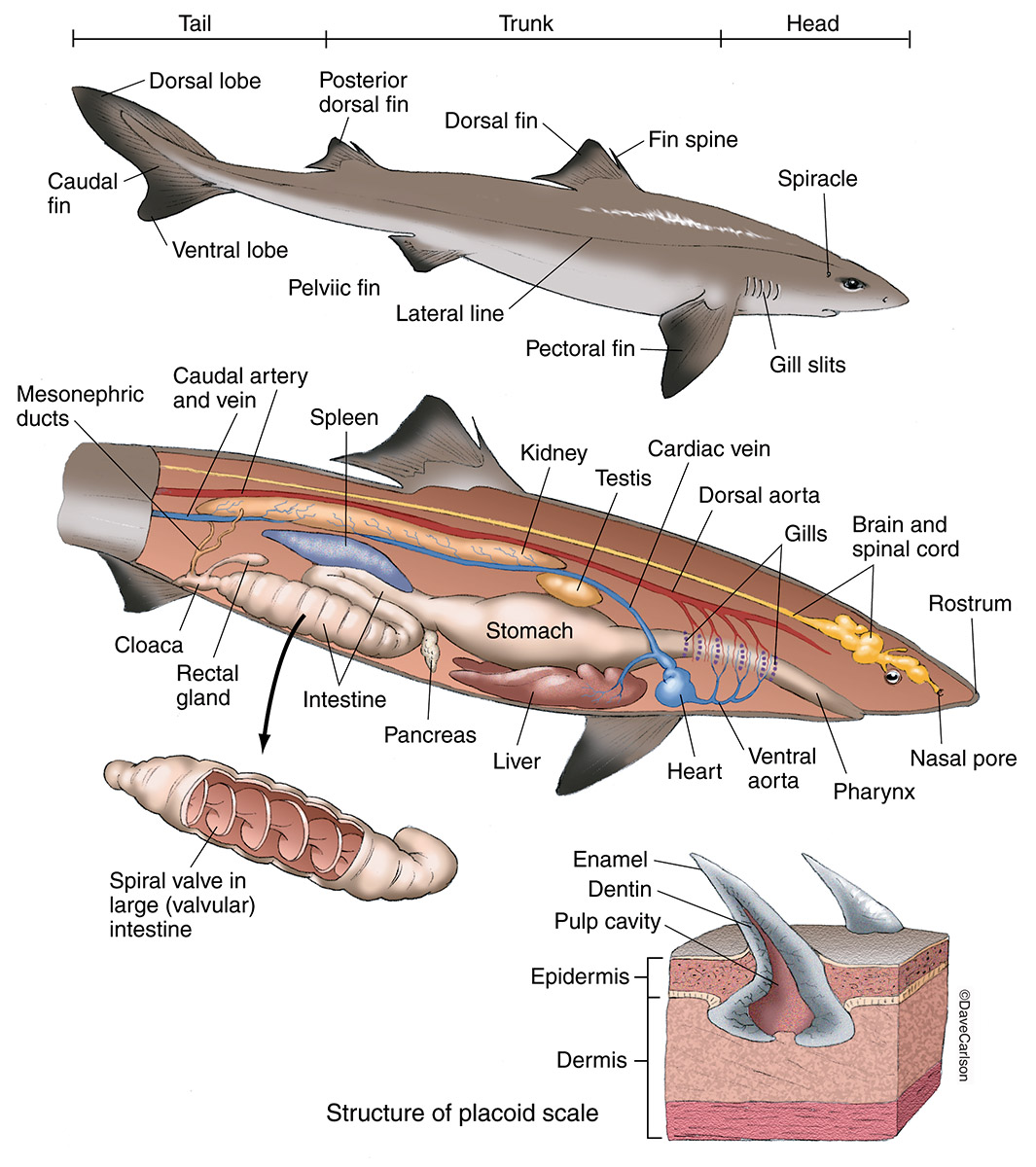
External Anatomy Of A Shark Anatomical Charts & Posters
Florida Museum of Natural History Gainesville, FL 32611 352-392-1721 (Research) or 352-846-2000 (Exhibits)
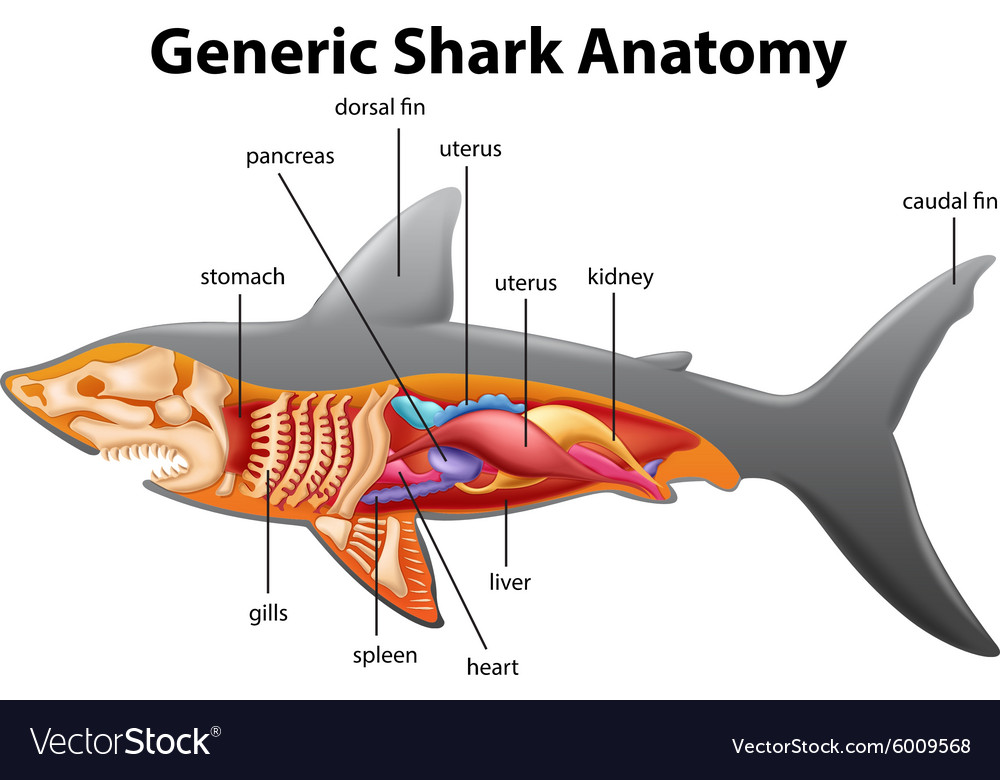
Shark Internal Anatomy Anatomical Charts & Posters
Sharks are an extremely dangerous kind of fish, with a lot of people encountering its fierce and powerful self. This creature ranges in sizes covering different kinds of sharks that swim the oceans of the world. The great white shark is known for its damage caused and mammoth structure. And many of the beaches worldwide are closed off to.

Diagram of whole shark with primary and secondary fin sets labelled.... Download Scientific
The liver is usually the first thing one would notice when peering inside and seeing the shark anatomy. A shark's liver can take up approximately 25% of the total body weight. The liver is detrimental to the shark, and it has two purposes. Fatty reserves are kept in the liver, thus causing it to be a store of energy.
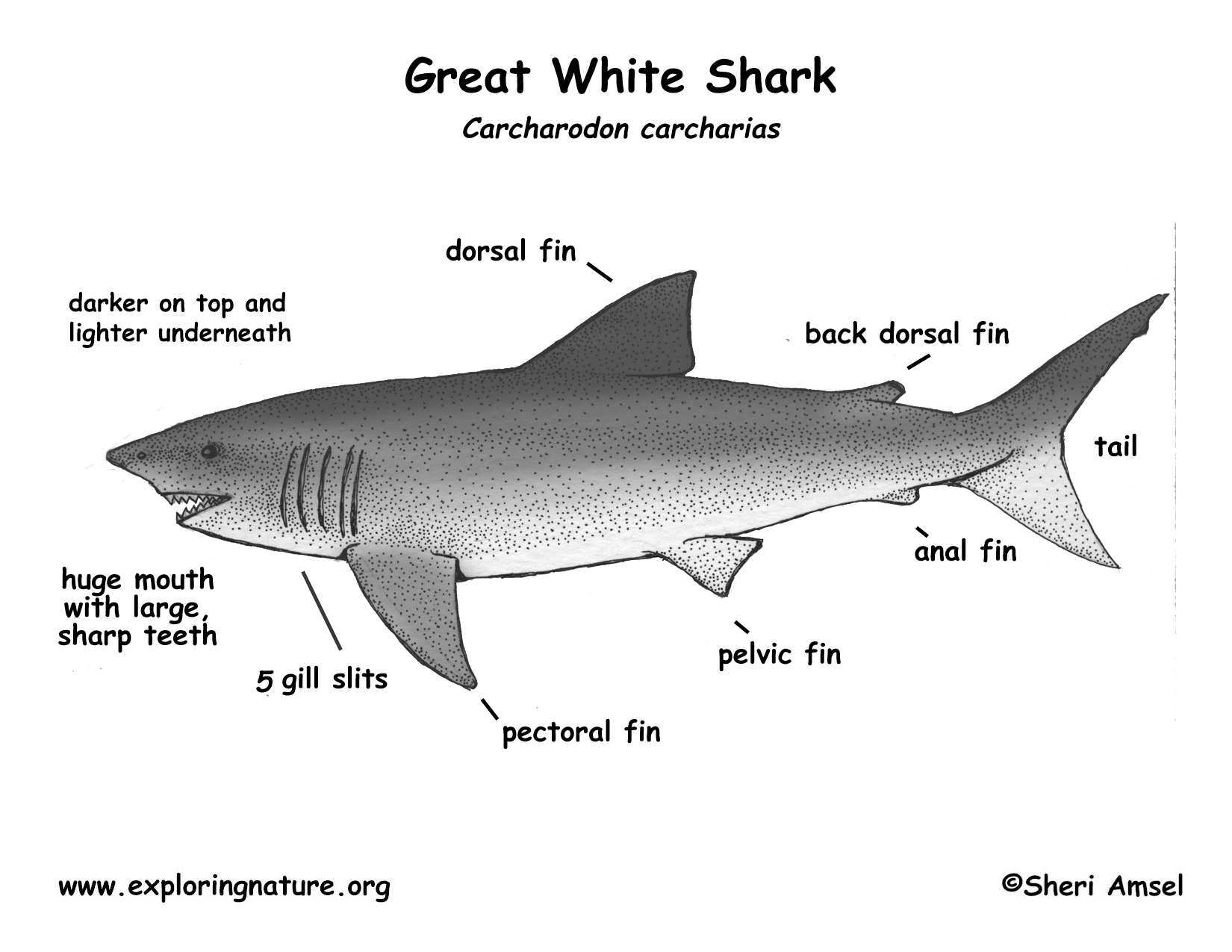
Shark (Great White)
Anatomy. The first features that most people notice are their streamlined, torpedo-like shaped body, fins and sub terminal mouths (under their heads). A shark's body is adapted to living in the ocean, where every tail movement requires hard work to move through the dense medium. Many sharks need to keep swimming to breathe, so it is very.

Diagram showing parts shark Royalty Free Vector Image
Step 5: Each student chooses a different shark to research, draw and label. Have students each choose a different shark species to research and then draw. Have students write the habitat it lives in and identify and label the animals' external and internal structures and camouflage patterns.

Free Shark Diagrams 101 Diagrams
A shark relies completely on its sensory organs in all aspects of its life. One of the reasons sharks are extremely good predators is their amazing sensory ability. Their senses are remarkable like no other fish or mammal. Sharks rely on their complex sensory system in all aspects of their life, hunting, feeding, mating and general existence.
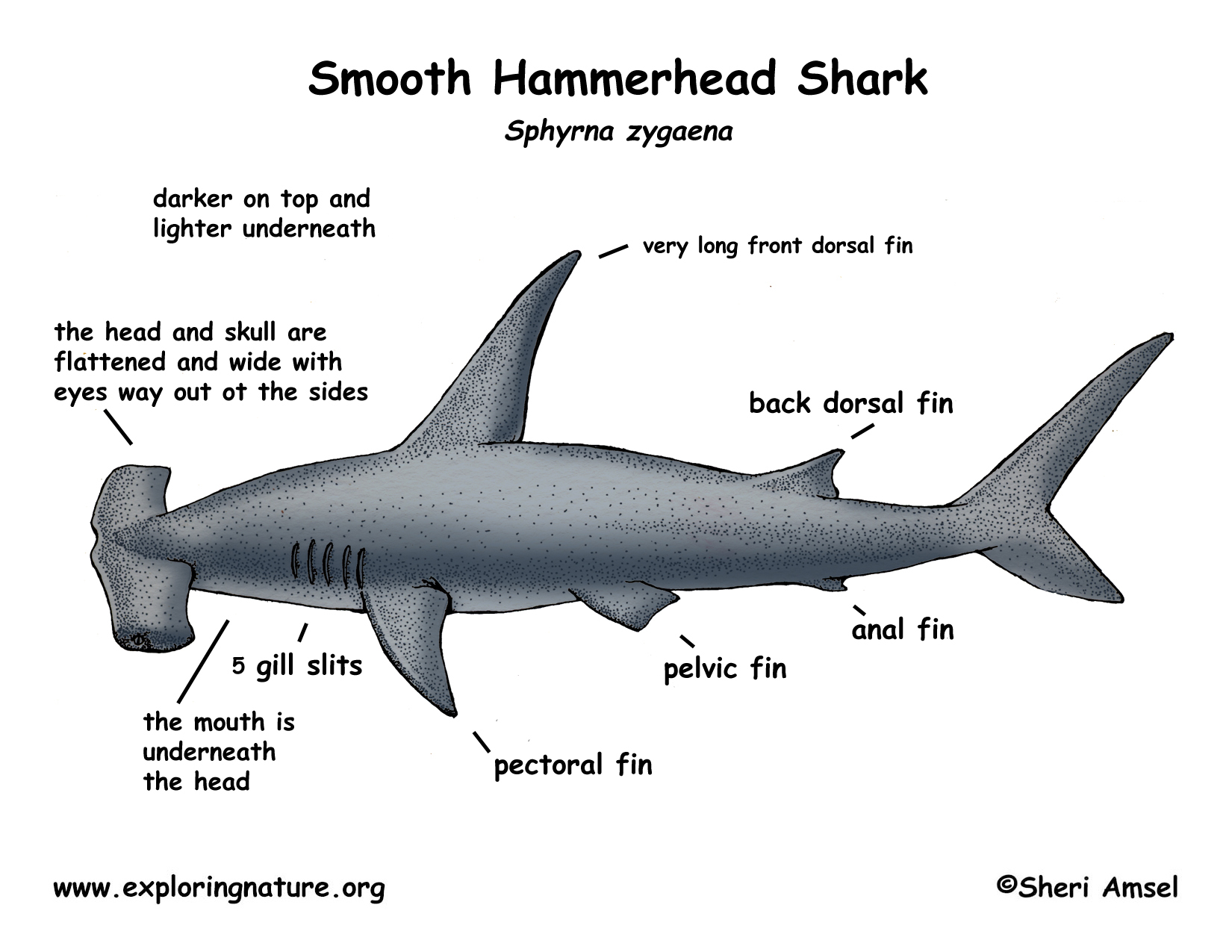
Shark (Smooth Hammerhead)
(back to clickable shark diagram) Liver Sharks have no air bladder to help keep them buoyant, as most fishes do. Instead the liver, which takes up as much as 90 percent of the body cavity and 25.

Shark Anatomy Diagram Poster 19x13
This imbalance causes oxygen in the water to diffuse into the shark's bloodstream, where it is distributed throughout the body. Some sharks have a gill pump, a set of muscles that suck in water and push it past the gills. This works something like our lungs -- the shark can continuously gather oxygen while it is in a still position.

an image of a shark with its parts labeled in the body and description on it
Shark skeletons are made of cartilage. This is strong and durable, yet much more flexible and lighter than bone. Being lighter helps a shark to stay afloat and reduces the amount of energy they need to move about. The flexibility of cartilage also allows them to make tight turns quickly. Making them one of the most agile animals in the ocean.

Internal Anatomy Anatomy Of Sharks Transparent PNG 1232x802 Free Download on NicePNG
Shark anatomy diagram adjective activity; Age: Preschool ages 3 - 6 years. Subjects and uses in the classroom: Ocean biome, Fish, Nature Table, Science Centers, Fine motor, Prewriting. How to use this resource: Parts of the shark - Gather books on sharks for children to explore. Print posters and label cards on cardstock and laminate.
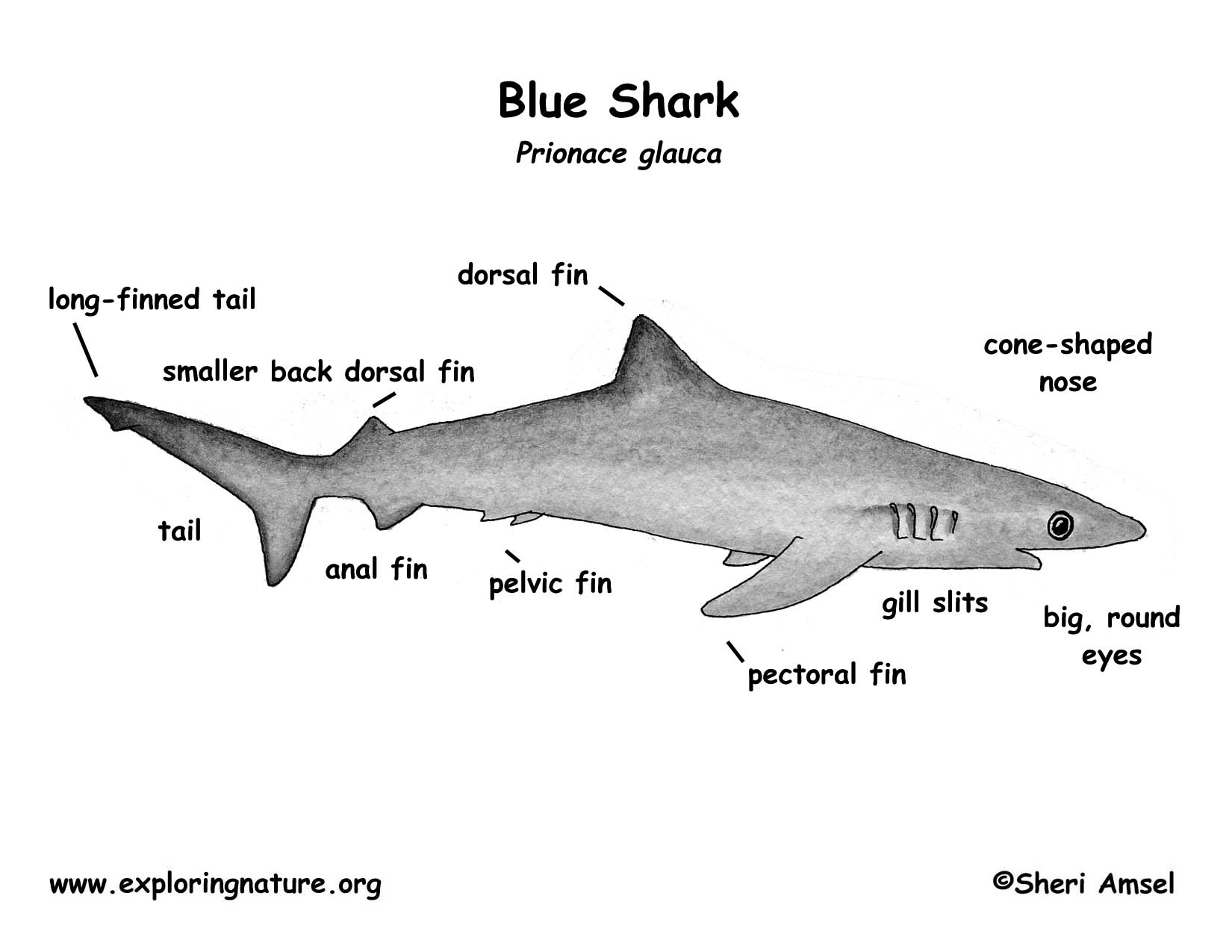
Shark (Blue)
Label Me! Printouts. Read the definitions, then label the shark diagram below. (Note: not all sharks have all of the fins and spines defined below.) anal fin - the fin on the lower side of the body near the tail (not on all sharks) caudal fin - the tail fin. eye - sight organs located on the head.
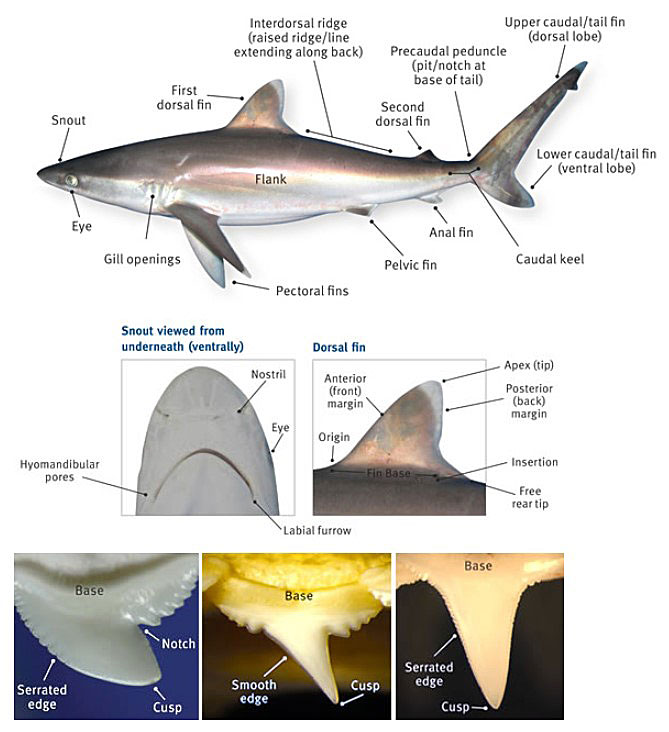
Shark anatomy Recreation, sport and arts Queensland Government
The diagram above does not represent any one species of shark, but rather is a compilation of the features posessed by many different species. While bottom-dwelling (benthic) sharks may posess spiracles to enable them to breathe easier while sitting on the bottom, open ocean (pelagic) sharks that swim continually do not posess them.

Shark Internal Anatomy Part 1
Most sharks have two fins along the dorsal line, which stabilize their movements. 10.-Pelvic fins. This pair is located on each side of the back of the body and also work to stabilize the shark's swim. The males have an extension at the inner edge of the pelvic fins, which make up the claspers. 11.-Anal fin.
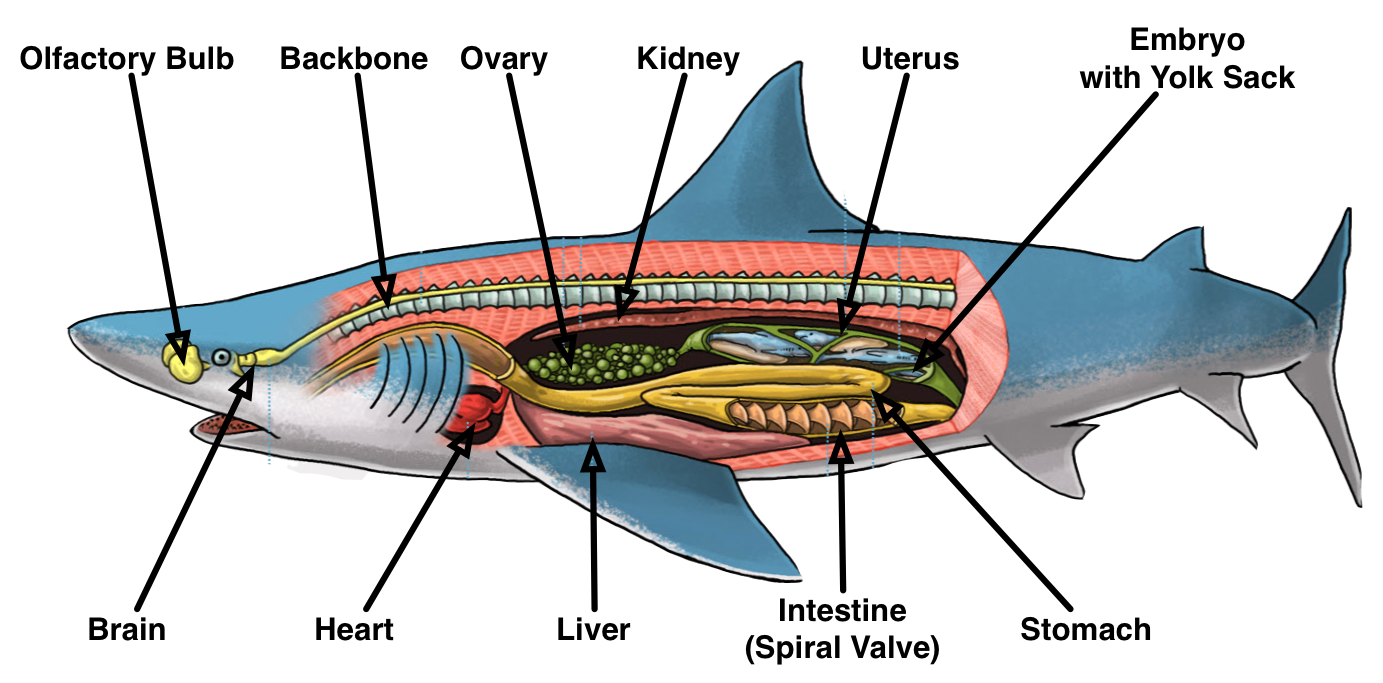
Page 25 Shark Handling and Release — ISSF Guidebooks
This shark's unusual name comes from the unusual shape of its head, an amazing piece of anatomy built to maximize the fish's ability to find its favorite meal: stingrays. A hammerhead shark uses its wide head to trap stingrays by pinning them to the seafloor. The shark's eye placement, on each end of its very wide head, allows it to scan more area more quickly than other sharks can.